
DCC
67

In depth Review: Patek Philippe 2523 Reference World Time.
The Most Beautiful World Time Ever?
Background
The HU 2523 and HU 2523-1 references are, to my eyes at least, the most beautiful vintage world time watches ever produced and certainly the most desired of all.
Launched in 1953, the 2523 reference comprises the new two-crown system that replaces the former Ref. 1415, a single crown model with its bezel engraved with cities to be switched manually. With a rather large diameter of 35.5 mm for the time, the watch is fitted with superb faceted lugs that are among Patek’s best. The dial features 41 cities.
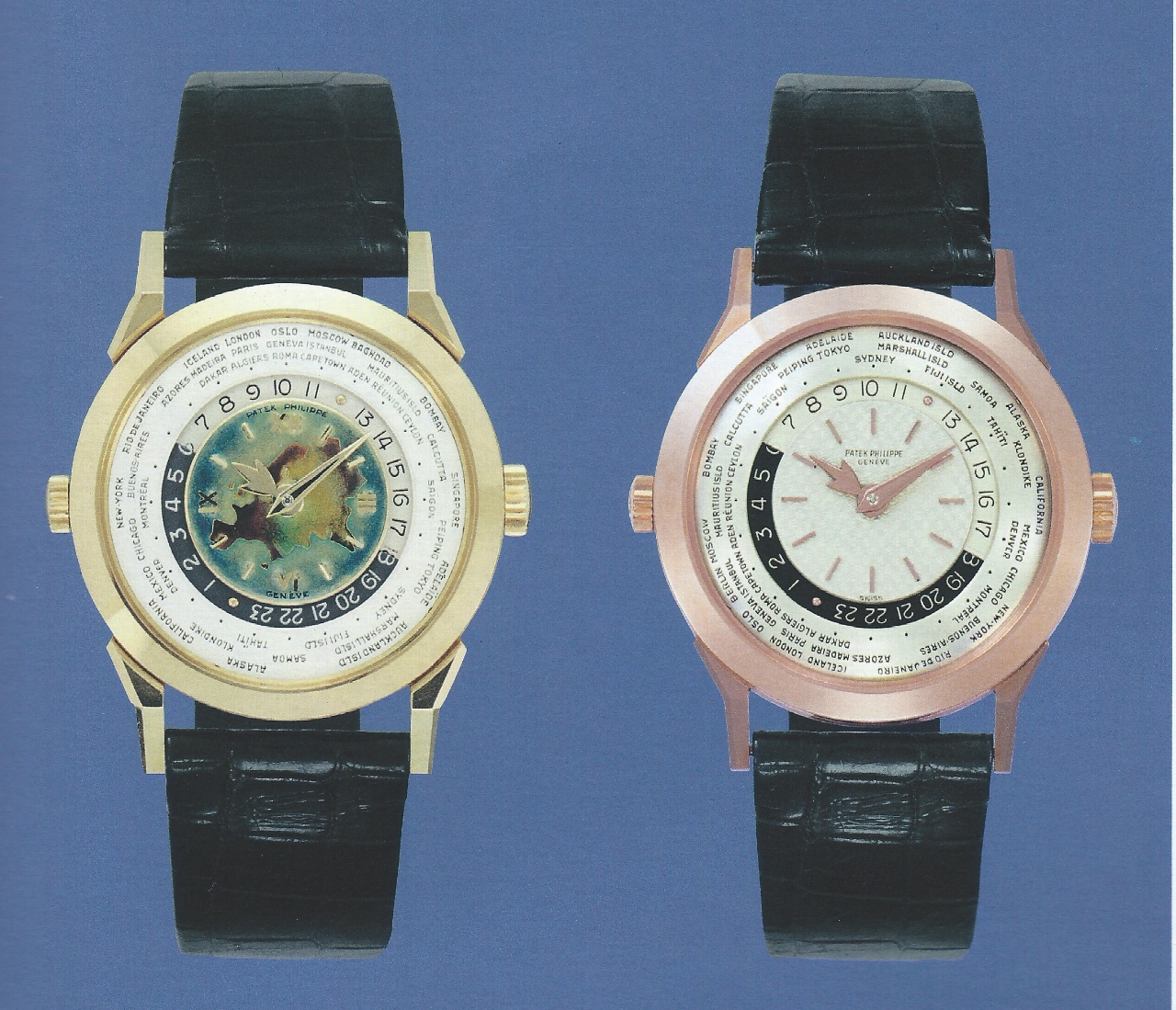
The 12-400 HU caliber comprises the world time module developed by Louis Cottier. It is my understanding that Louis Cottier himself fitted the modules. This would explain why the production of vintage world time watches is rather low.

In 1957, Patek Philippe launched a derivative model Ref. 2523-1, while carrying the same mechanism as its predecessor; there are subtle differences in the design of its appearance. When viewed from profile, the lugs are no longer above the bezel and are slightly less raised with less prominent multi-faceted edges comparing to the Ref. 2523, giving it a more modern and sleek look.
The majority of the cases were in either yellow or rose gold. There is only one piece in withe gold.
Dials
References 2523 and 2523-1 were furthermore fitted with differing dial versions. Whereas reference 2523-1 was available with the traditional silvered or gilt dials, reference 2523 existed also with different enamelled versions.
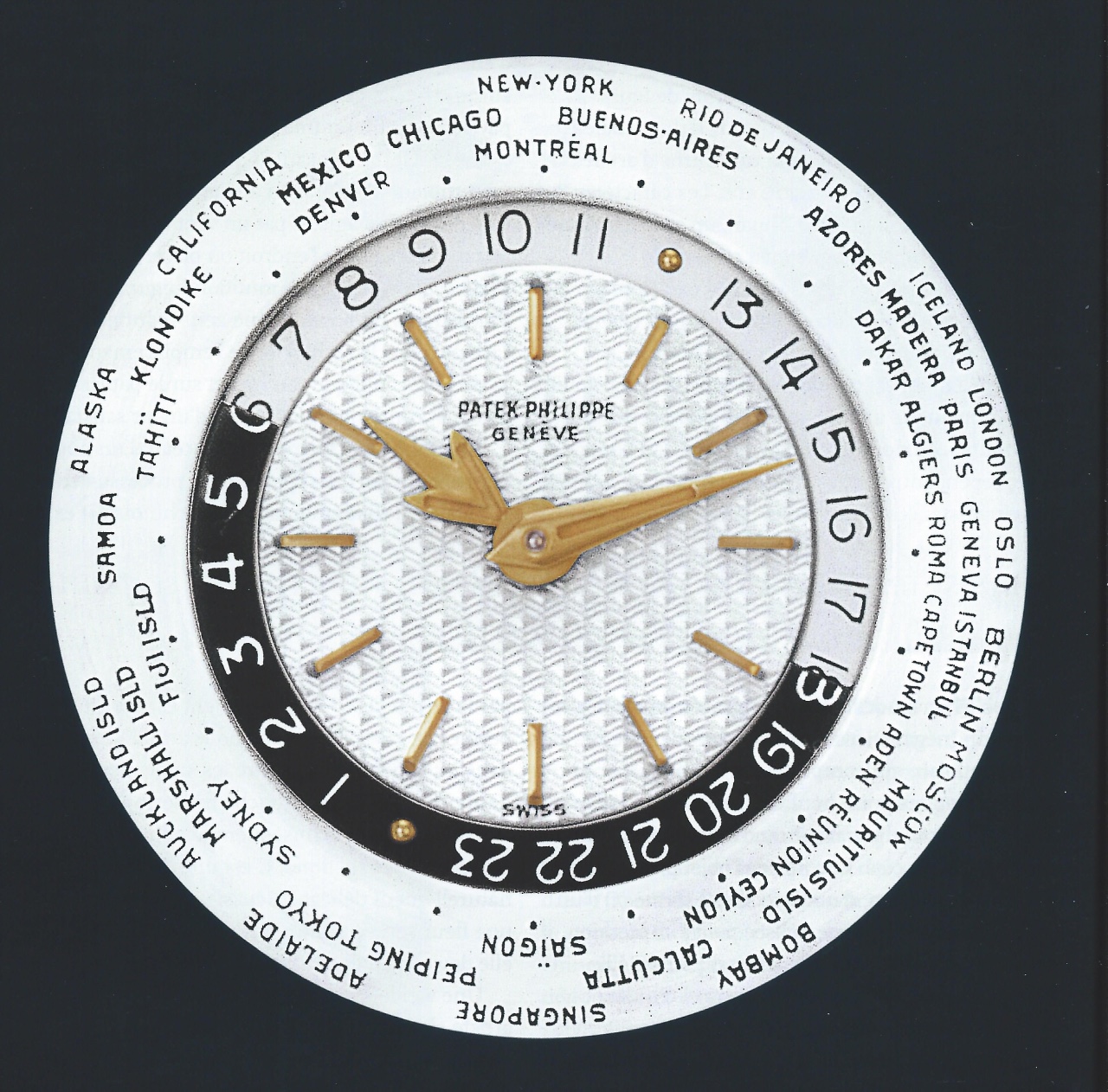
The different dial iterations of are as follows:
Plain silver
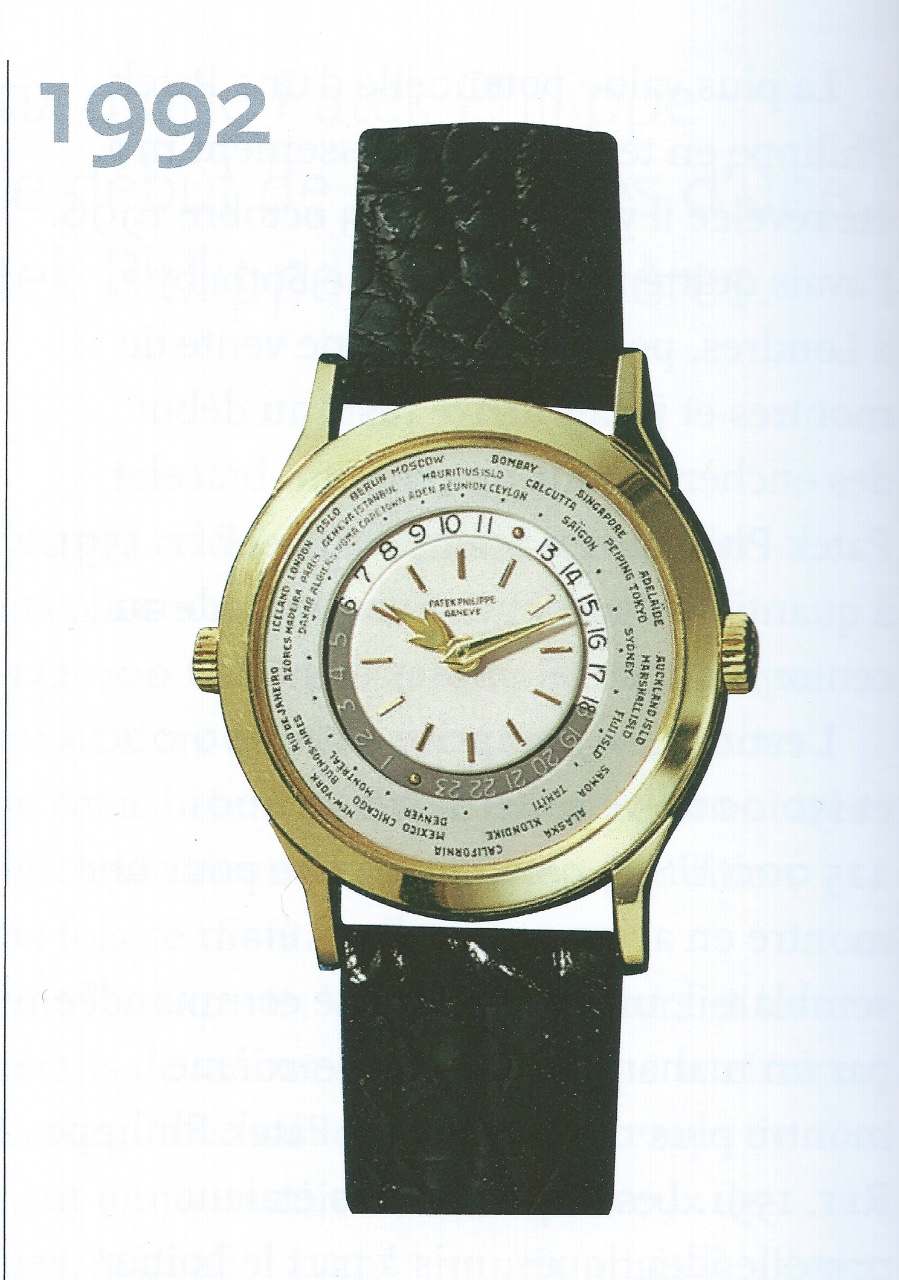
Center Black
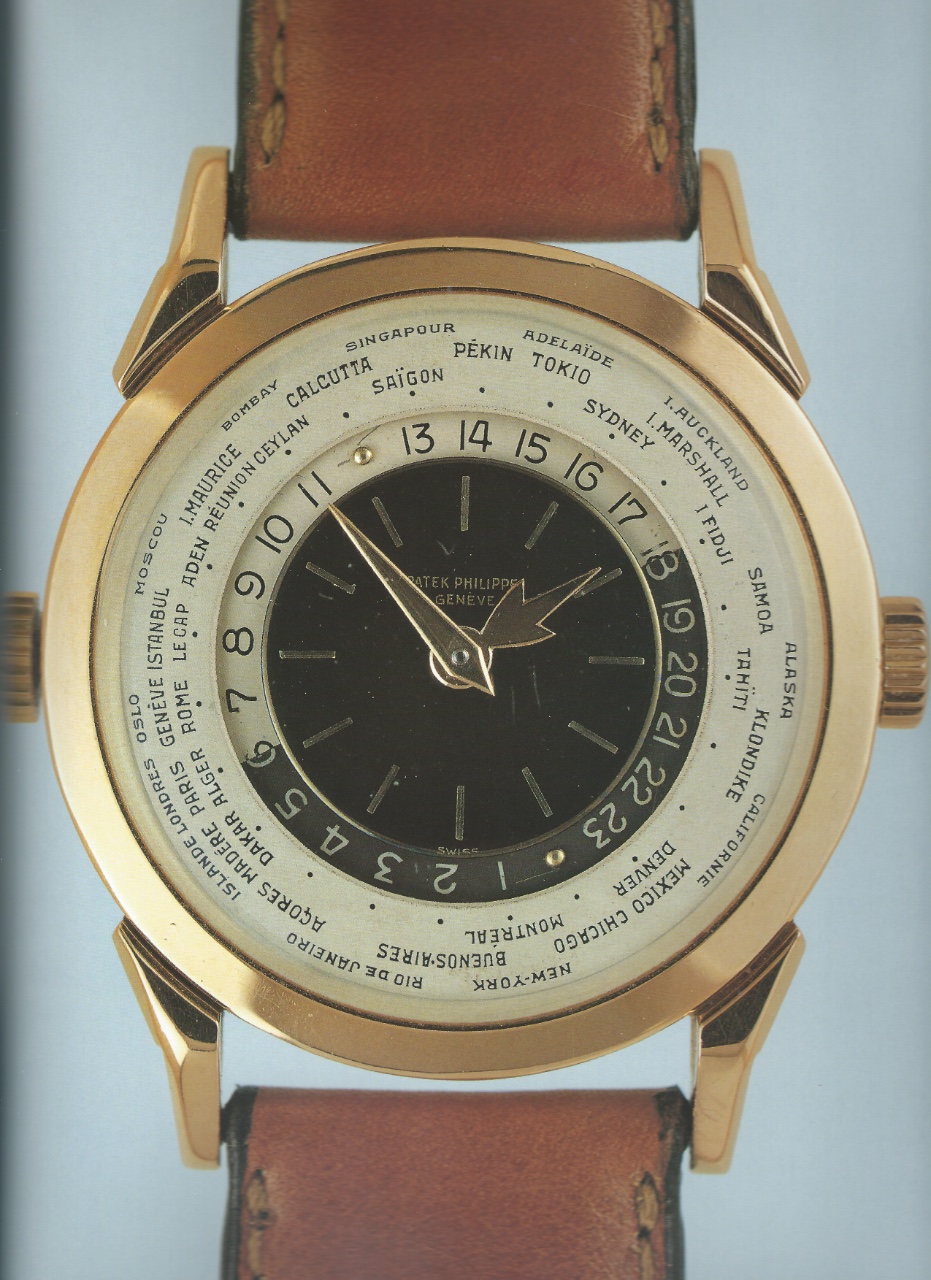
Guilloché silver
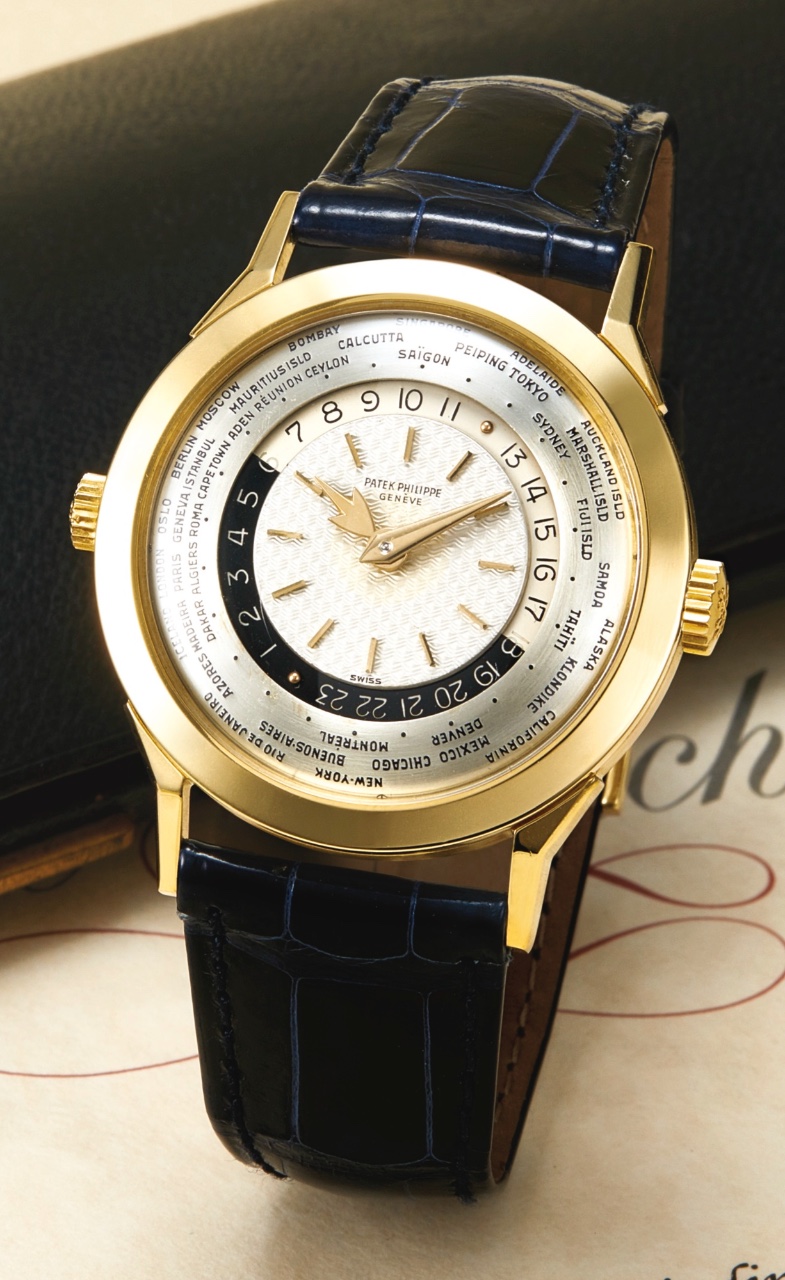
Guilloché yellow gold
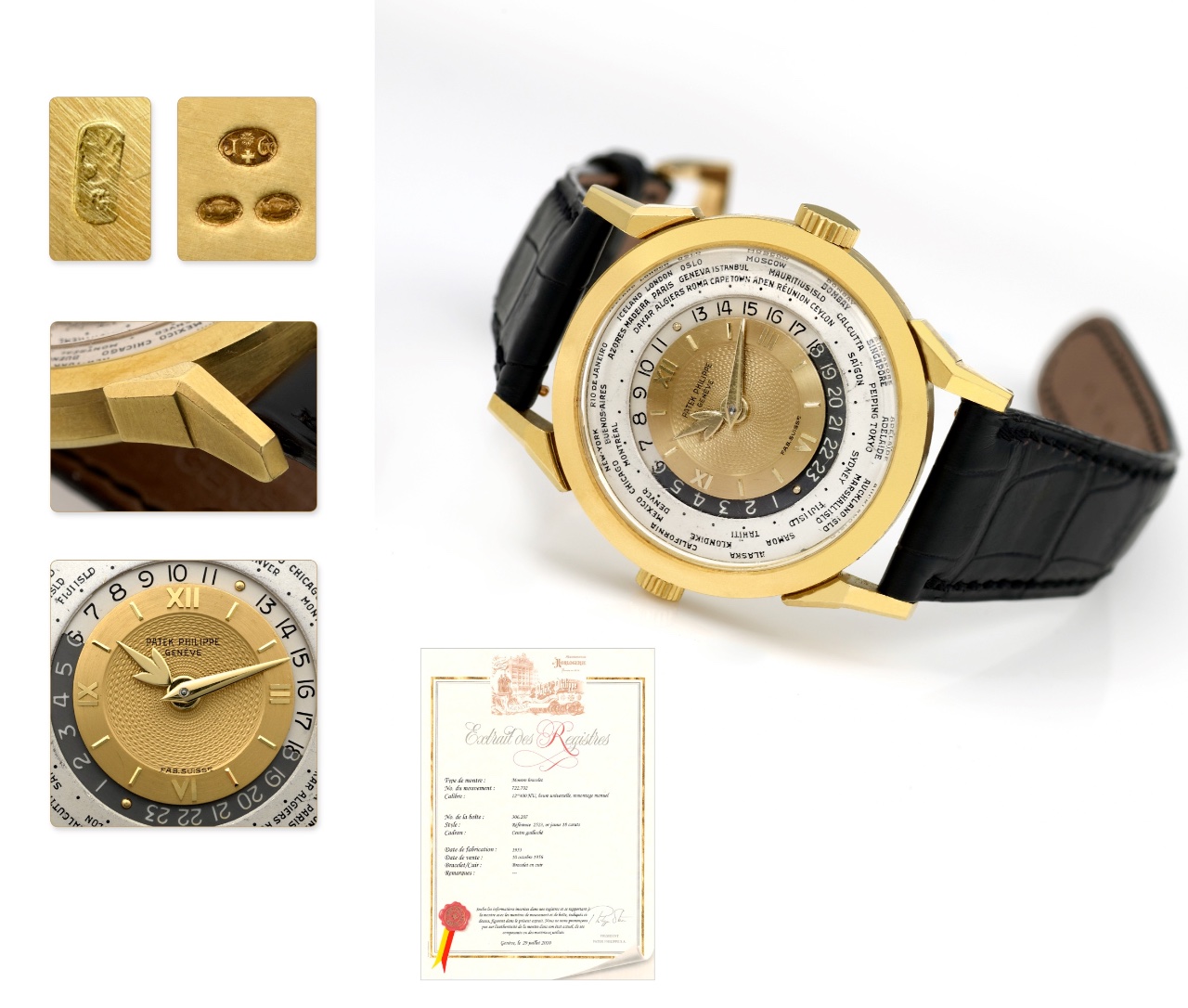
Blue translucent enamel
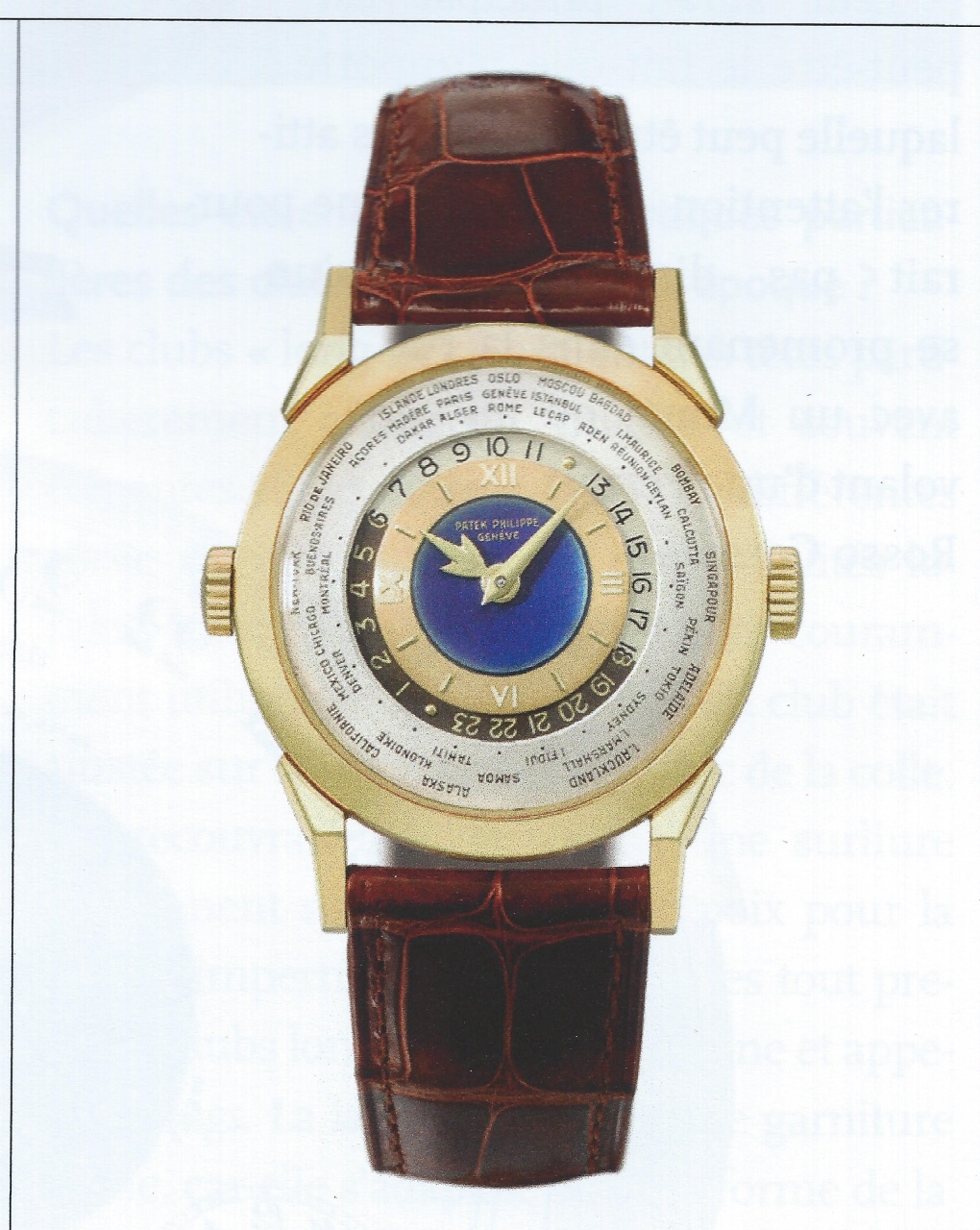
Cloisonné enamel

Two pieces bear the signature of Gobbi and Tiffany respectively.


Two examples were fitted with integrated bracelet.
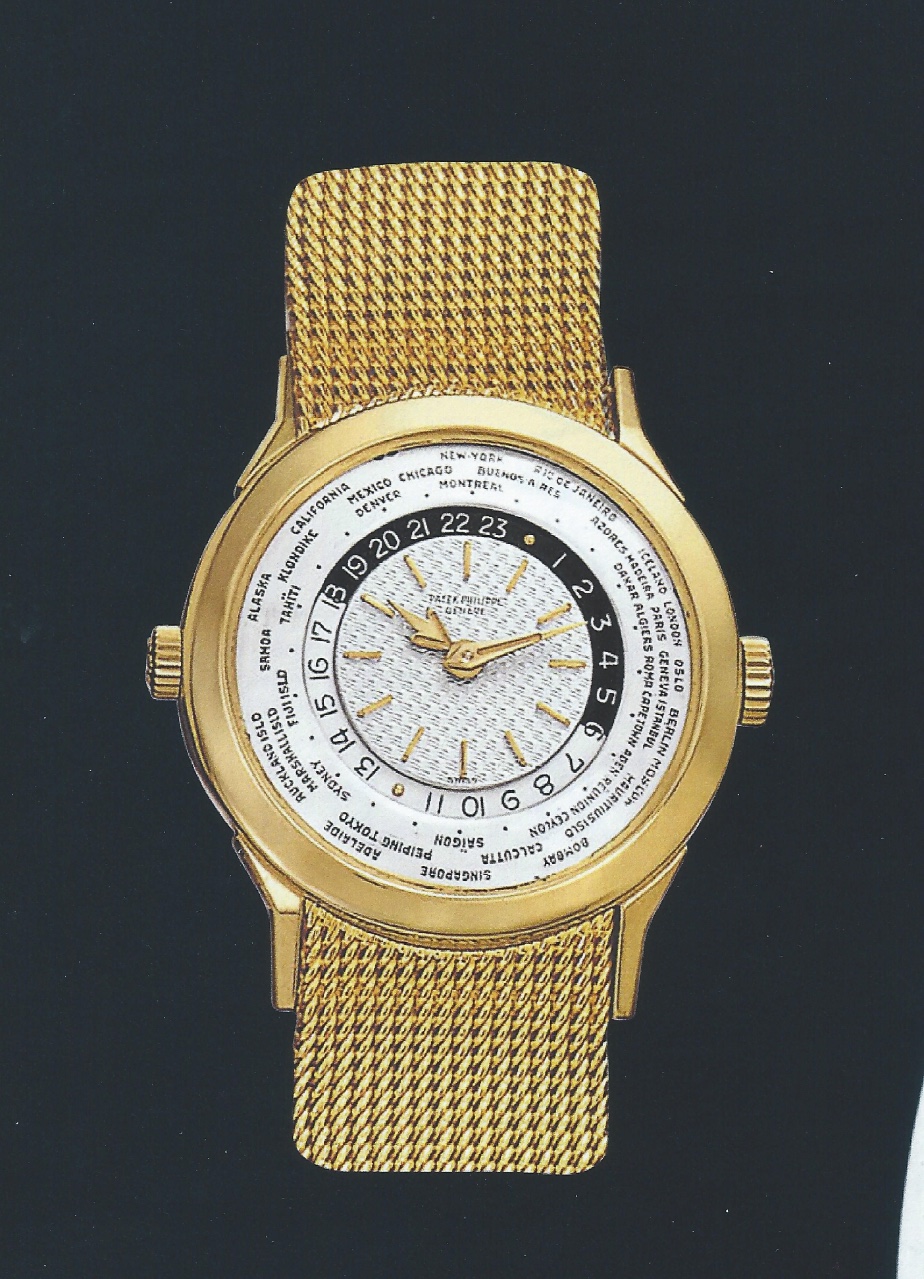
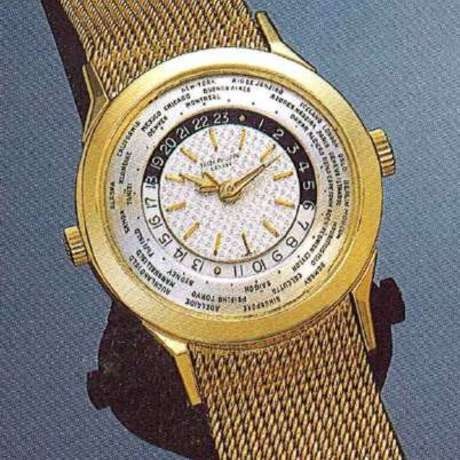
With a very large diameter of 35.5 mm for the time, the watch was not very popular.
Production Numbers
Trying to know the exact number of 2523 references ever produced is quite a challenge.
In the catalog of the sale of 14 May 2012, Christie's asserts that there would be fifteen 2523 / 2523-1 references: ‘ To date, only twelve yellow gold examples have made their reappearance in public, including the present. Furthermore two in pink gold and only one in white gold, now prominently exhibited at the prestigious Patek Philippe Museum in Geneva, are known’.
Back then, I was puzzled by such statement. I was convinced that Aurel Bacs was somehow ‘playing’ the extreme rarity of this reference. By looking in my documentation and doing some research on the Internet, I was able to identify with certainty nineteen references (I did publish my findings on a French Forum at the time). When I acquired the Patek Philippe Museum Complete Catalogue, I was able to identify two additional watches bringing the production number to 21. Then in October 2015, Sotheby’s presented a reference that was for the first time offered in public auction. This brings the total number of known watches to 22 examples. One of them was never commercialised and is on display at the Patek Philippe Museum. It is a rose gold with a silver guilloché dial fitted with the caliber 724 315.
The table below provides the details of the 22 known pieces to date:
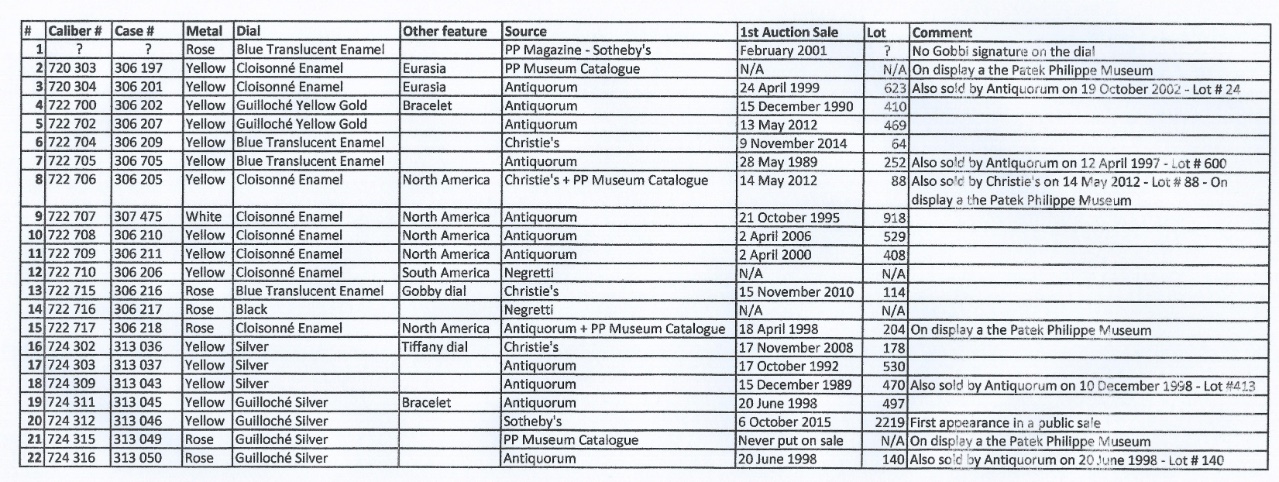
From the above inventory of 22 known references, 21 are formally identified by their caliber number. In addition, 18 of these watches have gone through auction houses since 1989.
The only reference for which I do not have the caliber number has a unique feature that I could identify on the basis of photos published in the magazine Patek Philippe. This is a pink gold watch with a blue translucent enamel dial sold at Sotheby's in February 2001. According to Christie's, there would only be two examples of this watch and one of them bears the signature of Gobbi on the dial (i.e. the watch sold by Christie's in November 2010). The watch sold by Sotheby's does not carry that signature. It is without a doubt the second piece.
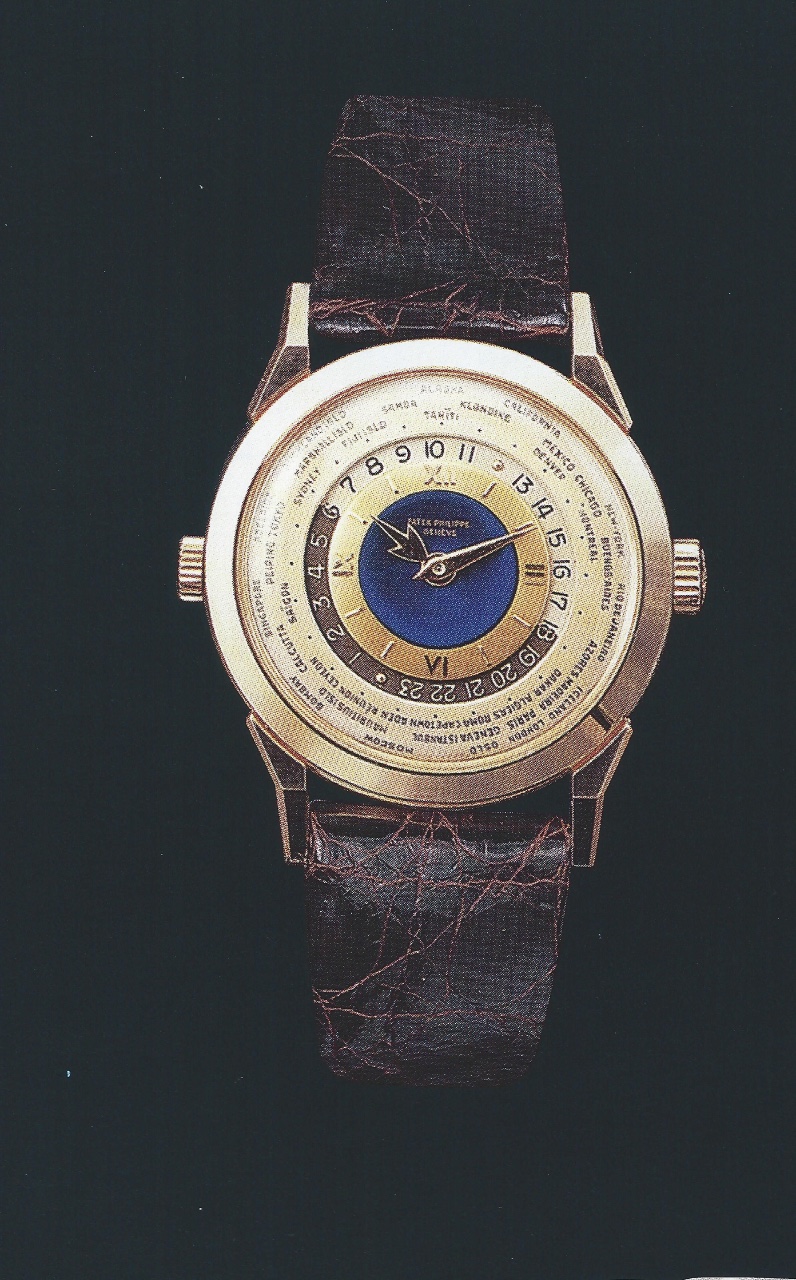
When looking at the caliber numbers, there are two main series i.e. the 722 7XX series and the 724 3XX series (presumably corresponding to the 2523 and the 2523-1 series). One is tempted to believe that some missing numbers not listed in the above inventory might belong to world time watches and more specifically the calibers 722 701, 722 703 and 724 310.
Wen comparing the case numbers, we see there are two specific sequences for watches with serial numbers 722 707 to 733 717 and 724 309 to 724 316. It could be concluded that the calibers 722 711, 722 714, 724 313 could also be world time watches.
From the above and without certainty, we could assume that there would be nine additional examples of 2523 references with the following calibres: 722 701, 722 703, 722 711, 722 712, 722 713, 722 714, 724 310, 724 313 and 724 314.
We can therefore still expect some very nice surprises that will delight collectors. This recently happened when the reference 724 312 which was previously unknown to the public and that had been kept in the private hands since it left the factory was proposed for the first time at auction by Sotheby’s.
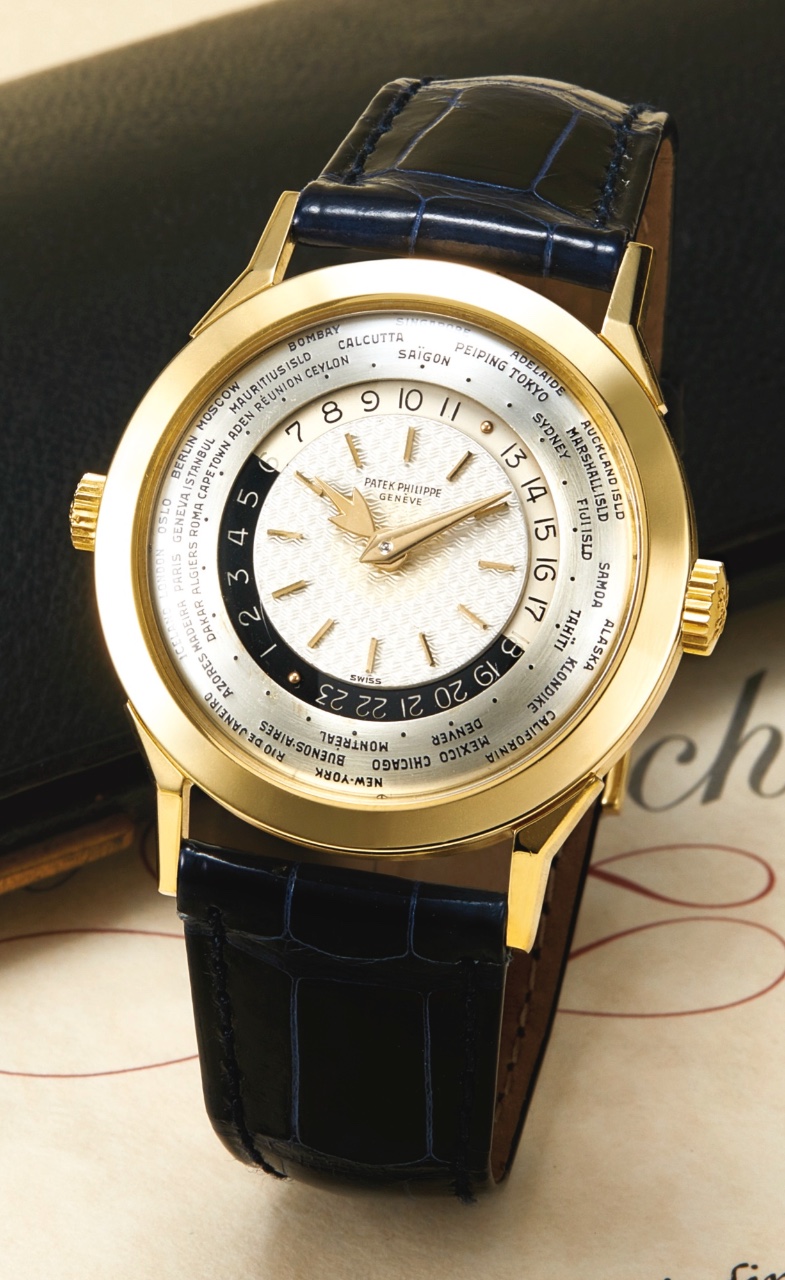
Enamel Cloisonné Dials
Among the 2523 references, the examples fitted with a cloisonné enamel dial are certainly the most iconic ones.
There are eight known 2523 / 2523-1 references with cloisonné enamel dial (six yellow gold, one rose gold and one white gold). The maps being displayed are respectively: Eurasia (two in yellow gold), South America (one in yellow gold) and North America (five including three in yellow gold, one in rose gold and one in white gold). Three of these pieces are on display at the Patek Philippe Museum respectively: the references 720 303 (yellow gold – Eurasia map), 722 707 (white gold – North America map) and 722 717 (rose gold – North America).

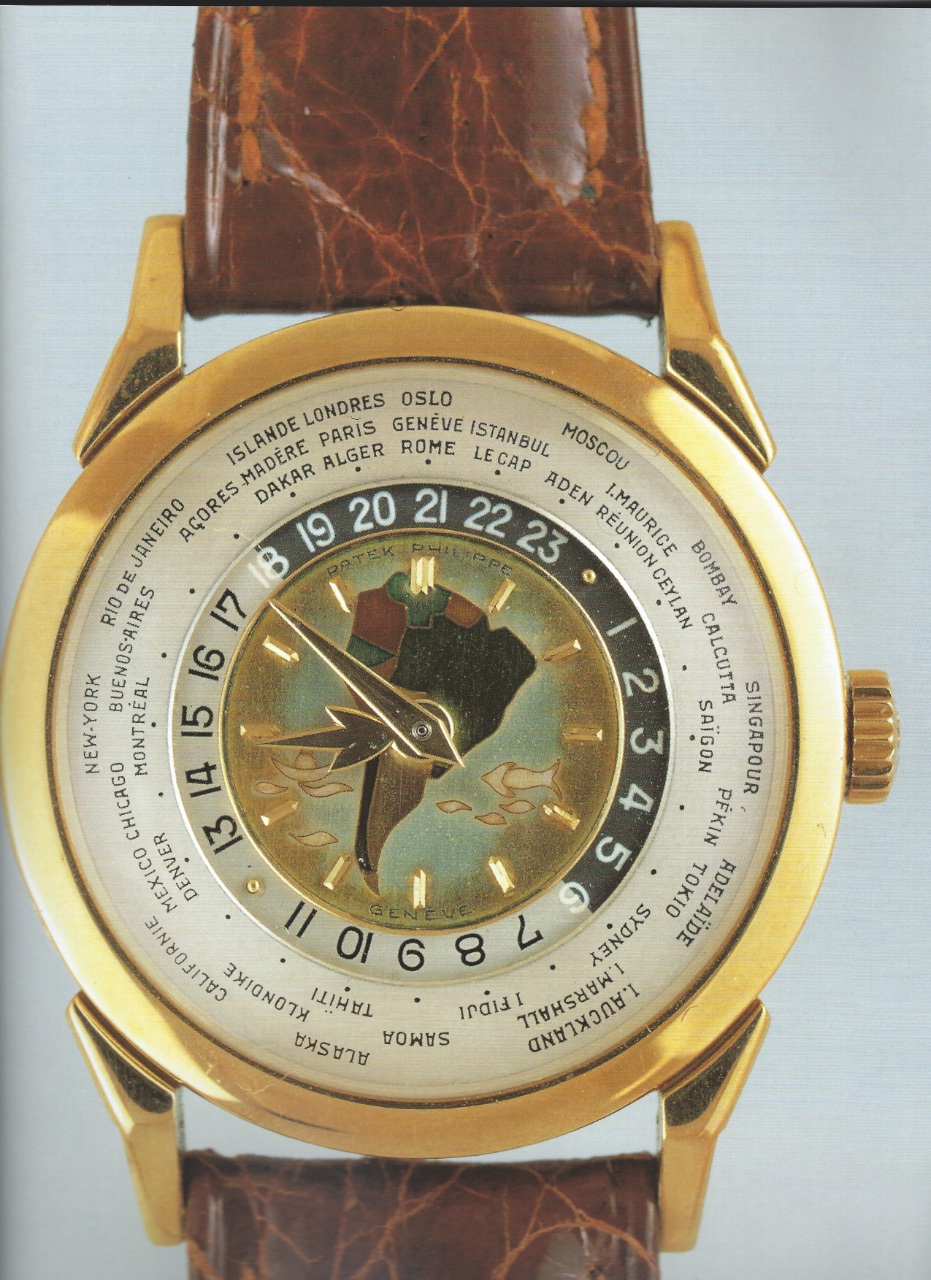

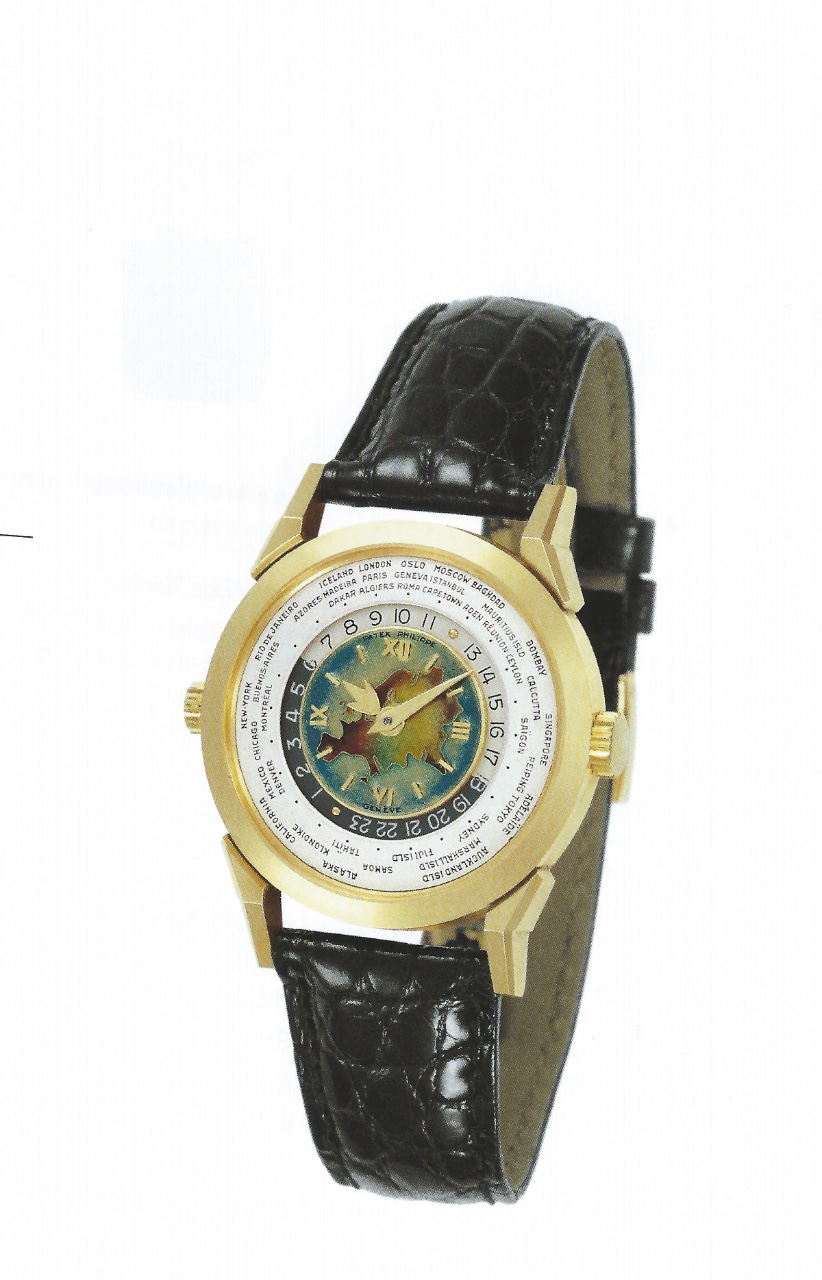
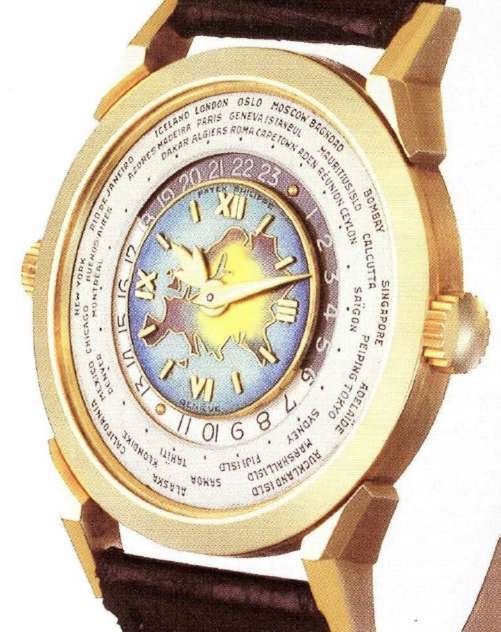
Prices
The prices realized by 2523 to dial and email cloisonné dial translucent enamel are very substantial. The last three sales reached respectively CHF 2,771,000 for a yellow gold watch and dial set North America (Christie's, May 2012), CHF 2,675,000 for a pink gold watch with a dial translucent enamel (Christie's, November 2011) and CHF 2,250,000 for a yellow gold reference with a dial representing North America (Antiquorum, April 2006).
For comparison, the latest sales of a ‘simple’ 2523 reference achieved respectively CHF 916,204 (yellow gold and silver guilloche dial - Sotheby's in October 2015) and CHF 951,000 (Yellow Gold Silver Dial - Christie's in November 2008).
There is a substantial premium to pay for 2523 references with enamel dial.
Conclusion
The production of World Time ‘vintage’ stops in the late sixties some time after the death of Louis Cottier in September 1966. According the Sotheby’s, the watch that was offered at auction in October 2015 was produced in 1968 and sold on 14 April 1975. It might be assumed that Patek Philippe had in its inventory some finished 12-400 HU calibers after Louis Cottier’s death.
The world time will be reintroduced much later in 2000 with the 240 based caliber 5110 reference while the world time with cloisonné enamel dial will only reappear in 2008 with the 5131J reference.
If you want to see 2523 references in real life, I would encourage you to visit the Patek Phillipe Museum where there are no more than four examples on display among other iconic world time watches.
As you may have guessed, the 2523 is absolutely out of my reach. I am however the lucky owner of a 5131G.

However, in my humble opinion, the 2523 remains the most beautiful world time ever produced by Patek Philippe.
Here is a link towards Mark In Paris' article about the whole Patek World Time lineage: www.watchprosite.com 0
Books
- Complete Catalogue of the Patek Philippe Museum - Patek Philippe Volumes I & II, Patek Philippe 2013
- J. Goldberger, Patek Philippe Steel Watches, Damiani Editions as well as the link to the steel watches database:
[url=http://www.johngoldbergerwatches.com/References.html]http://
www.johngoldbergerwatches.com .html[/url]
- M. & A. Huber Banbery, Patek Philippe Geneva, Volume 2 Wristwatches, Second Edition, Patek Philippe
- Michael J. Mehltretter, Patek Philippe - Cult Object and Investment, Schiffer, 2012
- O. Patrizzi Collecting Patek Philippe Wristwatches, 2 Volumes, First Edition, Guido Mondani 2004
- J. Reardon, Patek Philippe in America - Reference Guide, Volume 1 Men's Watches, Cefari 2010
- G. Negretti & P. De Vecchi, Patek Philippe Montres-bracelets compliquées, Könneman, 1999
Articles
- Boutantin, Patek Philippe’s Limited Edition Watches 1989-2006, Vox Magazine, Antiquorum Editons, Summer Edition 2006, pp. 98-111
- R. Byam Shaw, Dressed in Coats of Many Colors, Patek Philippe Magazine, Vol. I, N° 6, pp. 84-85
- F. Chicha, The World Time Watch, Vox Magazine, Antiquorum Editions, Summer Edition 2010, pp. 34-39
- T. Delfs, Tout l’éclat des vitraux, Patek Philippe Magazine, Vol. II, N° 11, pp. 78-85
- J. Faver, Patek Solar Clocks, Vox Magazine, Fall Winter 2012, pp. 50-51
- J. Gurney, Circling the Globe, Patek Philippe Magazine, Vol. I, N° 7, pp. 82-85
- T. Lips, Wheels within Wheels, Patek Philippe Magazine, Vol. I, N°12, pp. 52-59
- O. Patrizzi, Louis Cottier, A Watchmaking Genius Ahead of His Time magazine, Vox, Antiquorum Editions, Fall 2002, pp. 22-25
- D. Rooney, Le Temps Universel, Patek Philippe Magazine, Vol. II, N° 4, pp. 42-47
- Le Genevois Cottier invente l’heure universelle in Patek Philippe Museum, Edition spéciale Tribunes des Arts, pp. 72-73
This message has been edited by Mark in Paris on 2016-04-24 15:18:38














